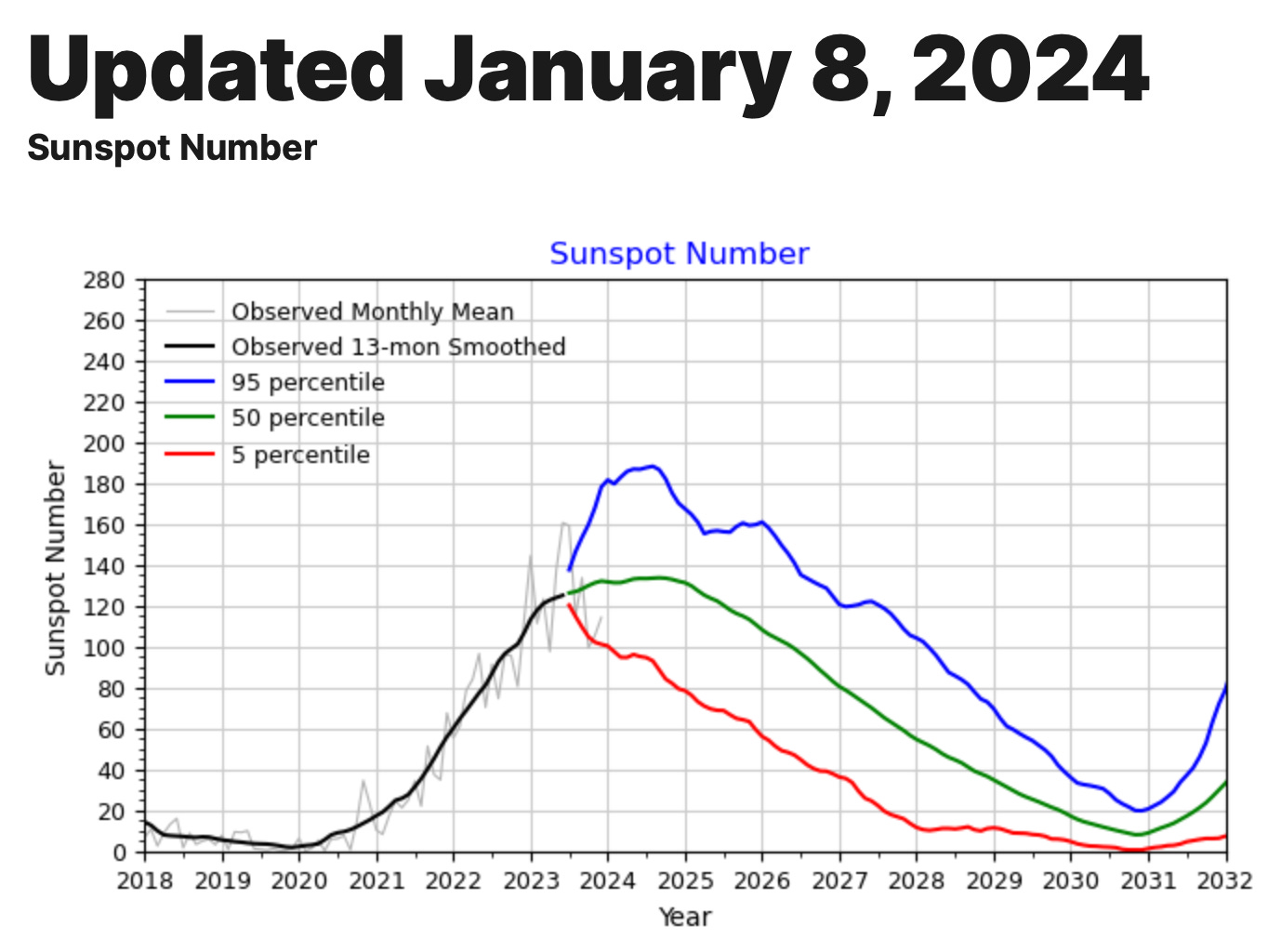In this featured excerpt from our recent SaveOurSkies SWARM webinar, renowned expert Jim Lee from ClimateViewer.com offers insightful perspectives on the current surge in citizen activism and global upheaval. Although the primary focus of our webinar was on mobilizing efforts against geoengineering and enhancing our understanding of atmospheric phenomena, the conversation intriguingly veered towards the interplay between Sunspots, Mass Excitability, and the rising wave of protests both in the US and internationally. We're grateful to Jim Lee for granting permission to share this segment, providing our audience with a unique angle on how cosmic forces might influence current socio-political dynamics."
In an era marked by global unrest, from the war in Ukraine to farmer revolts in Europe, a century-old theory by Soviet scientist Alexander Leonidovich Chizhevsky offers a unique perspective. Chizhevsky, a pioneer in heliobiology and aeroionization, linked solar activity, specifically sunspots, to periods of human mass excitability and societal upheaval.
Chizhevsky's work, largely focused on the 11-year solar cycle, suggested that periods of high solar activity and increased negative ionization in the atmosphere lead to heightened human excitability. This theory was supported by historical analyses correlating sunspot peaks with major events like riots, revolutions, and wars.

Now, as we find ourselves in the midst of what Chizhevsky identified as a period of maximum excitability (2023-2025), the world is witnessing significant geopolitical and social turmoil. According to Chizhevsky's cycle, this period is characterized by revolution and conflict, as seen in current global events.
Exactly what we are witnessing today.
Interestingly, Chizhevsky's theory extends beyond sunspots. It encompasses the broader concept of cosmic influences on human behavior. The 9-minute snippet of Jim Lee reveals a fascinating connection between the human brain, lunar cycles, and our bioelectric nature. The idea is that our brains, heavily influenced by the moon and other cosmic forces, go through a four-week hormonal cycle, affecting everything from mood to productivity.
Given their creepy occult connections, today's technocrats and Mother WEFers likely have an understanding of this 11-year cycle, which might explain their apparent unease around current global developments, massive uprisings, and loss of control over their engineered narratives.
As far as you and I are concerned, with only about 1.5 years left in this period of heightened excitability, there's a sense of urgency to capitalize on this energy before a shift towards passivity and autocratic rule, as predicted for 2026-2028. This cycle, which is believed to be deeply ingrained in human nature, tells me we are currently in a unique window of opportunity for change and action.
SUNSPOT IMPACTS ON UNEMPLOYMENT AND RECESSIONS
Not only does it appear sunspots affect excitability in all things living, but we know they affect climate and, according to researchers, also impact unemployment and recessions.
A 2012 paper authored by Mikhail Gorbachev on the topic of the impacts of “Sunspots, Unemployment, and Recessions, or Can the solar activity cycle shape the business cycle?” lays it out;
……. reported that from 1968, the cyclical fluctuations of the baking interest rate (“prime-rate”) closely followed the solar activity cycle (Poluyakhtov and Belkin, 2011). In their other paper, those scientists reported a close correlation of the US and global GDP with the solar cycles. This correlation led the authors to forecast new global economic crises in 2013-14 (after the next solar maximum) and in 2018-19 (before the next solar minimum).
In early 2012, John Hampson wrote in an unpublished mimeo that “the period of rising solar activity (sunspots) into and around the solar maximum correlates positively with economic growth, inflation and risk-asset returns. What links these is risk-taking, spending and investing, or in other words, human excitability, which leads us back to Chizhevsky’s work. According to his studies, the period of declining sunspots after the solar maximum was one of change from activity to apathy. Perhaps appropriately, as the money stops circulating in the economy, this is typically a time of recession. Recessions [in the US economy] follow solar cycle peaks, corresponding to the peaks in geomagnetism that lag solar maximums” (Hampson, 2012). Other recessions not related to solar maximums have occurred as well, but once we focus on those that have followed solar peaks, we get a “without fail” relationship. Each solar maximum was closely followed by a recession in the US since the 1900s. Extending this trend into the future, the author forecasted the US recessions in 2014-15, 2023-24, 2034-35, and even 2045-46.
“Each solar maximum was closely followed by a recession in the US since the 1900s. Extending this trend into the future, the author forecasted the US recessions in 2014-15, 2023-24, 2034-35, and even 2045-46.”
Current researchers and Chizhevsky's century-old work provide a lens through which to view our current global situation. It suggests that the turmoil and unrest we see worldwide may not be random but part of a larger, cosmic cycle of human behavior influenced by solar and lunar activity. Understanding this cycle could be key to predicting and even shaping future societal trends as we navigate these turbulent times.
And even more so, it tells us the “timespan” for momentous change is short. We have a year and a half to get our work done.
If you find these interviews and articles informative, please become a paid subscriber for under 17¢ a day. I don’t believe in paywalls, but this is how I make a living, so any support is appreciated. Either way…. it’s available to you….
















Share this post